Why Global Agricultural Suppliers Prefer Lida Group’s Steel Structure Warehouse Solutions for Durability and Customization
2025-Sep-10 16:53:11
By Admin
Introduction
Global agricultural suppliers operate in a high-stakes, fast-paced industry where the integrity of storage directly impacts profitability, food security, and supply chain resilience. From bulk grain and fertilizer to perishable produce and farm machinery, these suppliers manage diverse inventory that demands storage solutions capable of withstanding harsh conditions, adapting to fluctuating volumes, and protecting assets over decades. Yet traditional storage options—wooden barns, concrete silos, and generic prefab structures—consistently fall short: they degrade quickly, lack flexibility, and fail to meet the specialized needs of modern agricultural supply chains.
In this context, Lida Group’s steel structure warehouse solutions have emerged as the preferred choice for global agricultural suppliers. Renowned for their uncompromising durability and tailored customization, Lida’s warehouses address the unique challenges of agricultural storage, from extreme weather and pest infestations to variable inventory sizes and regional regulatory requirements. Unlike one-size-fits-all alternatives, Lida’s steel warehouses are engineered to grow with suppliers’ businesses, reduce long-term costs, and ensure compliance with global standards.
This article explores why global agricultural suppliers trust Lida Group’s steel structure warehouses, focusing on the dual pillars of durability and customization. It examines the limitations of traditional agricultural storage, details Lida’s durability-enhancing technologies and customization capabilities, presents real-world case studies from diverse regions, and analyzes the company’s competitive edge. Finally, it concludes with insights into how Lida’s solutions are shaping the future of agricultural supply chain storage.
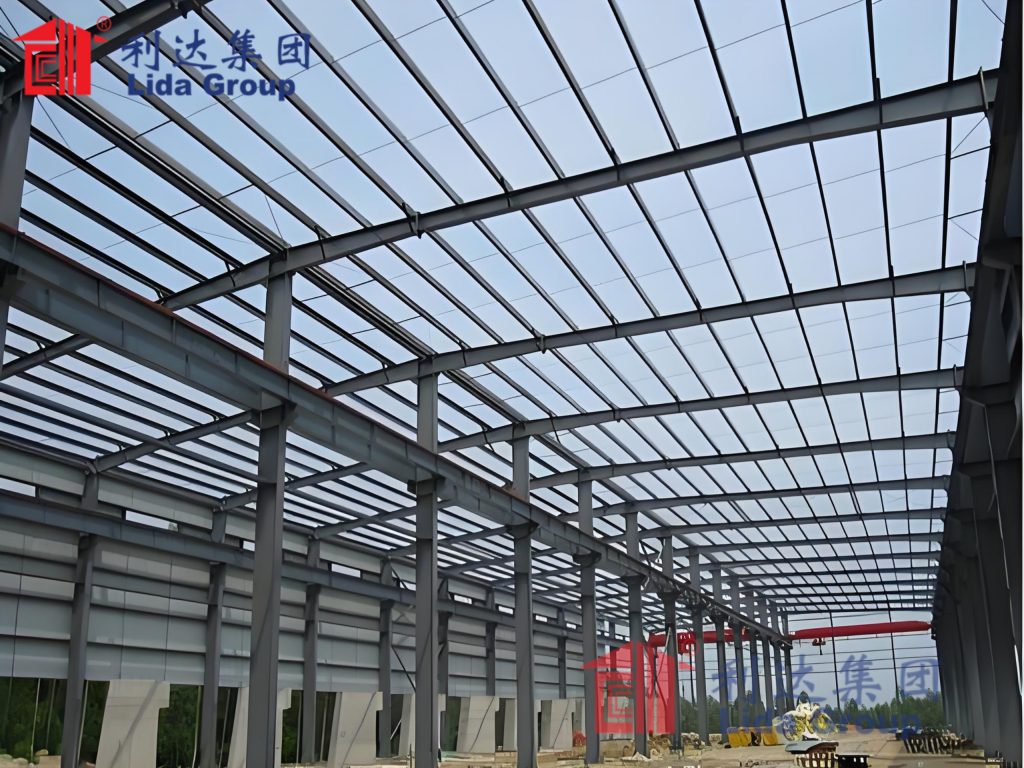
The Limitations of Traditional Storage for Global Agricultural Suppliers
Global agricultural suppliers face distinct storage challenges that traditional solutions cannot adequately address. These challenges are amplified by the scale of their operations—managing inventory across multiple regions, complying with varying regulations, and protecting goods during long-term storage and transportation.
1. Poor Durability in Harsh Agricultural Environments
Agricultural storage facilities are exposed to a range of damaging conditions that traditional structures struggle to withstand:
- Extreme Weather: Suppliers operating in regions like the U.S. Midwest (tornadoes, heavy snow), Southeast Asia (monsoons), and Australia (cyclones) need warehouses that resist high winds, flooding, and temperature extremes. Wooden barns rot in humidity and collapse under snow loads, while concrete silos crack in freeze-thaw cycles and absorb moisture that ruins stored crops.
- Corrosion and Chemical Damage: Fertilizers, pesticides, and agricultural chemicals accelerate corrosion in low-quality steel or concrete structures. Traditional warehouses require frequent repairs to address rust or chemical degradation, adding unplanned costs.
- Pest Infestations: Rodents, insects, and birds damage stored grain, feed, and produce. Wooden structures are particularly vulnerable, with pests chewing through walls to access inventory—resulting in average losses of 5–10% of stored crops annually, according to the United Nations Food and Agriculture Organization (FAO).
2. Inflexibility for Variable Inventory and Growth
Global suppliers manage dynamic inventory levels—seasonal harvests, fluctuating demand, and expanding product lines—yet traditional storage offers little flexibility:
- Fixed Sizes: Concrete silos and brick warehouses are built to fixed dimensions, making it impossible to expand or reconfigure space as inventory needs change. A supplier experiencing growth may need to build an entirely new facility, incurring high costs and delays.
- Limited Adaptability: Traditional structures cannot be modified to accommodate specialized storage needs, such as temperature-controlled zones for perishables or high-clearance areas for heavy machinery. Suppliers often resort to costly retrofits or multiple disconnected facilities, complicating operations.
3. Compliance and Quality Control Risks
Global agricultural suppliers must adhere to strict regulations governing storage hygiene, safety, and traceability—requirements traditional structures often fail to meet:
- Hygiene Standards: Wooden and concrete structures are difficult to clean thoroughly, harboring mold, bacteria, and pest residue that violate food safety standards (e.g., EU Regulation 178/2002 or U.S. FDA guidelines).
- Safety Compliance: Many traditional warehouses lack fire-resistant materials or proper ventilation, failing to meet occupational safety regulations and increasing the risk of accidents.
- Traceability Challenges: Generic structures do not integrate with modern inventory tracking systems, making it difficult to monitor stock levels, expiration dates, or batch information—critical for compliance with global trade standards.
4. High Long-Term Costs
While traditional storage may have lower upfront costs, its poor durability and inefficiency result in higher long-term expenses:
- Maintenance Costs: Wooden barns require annual repairs (painting, replacing rotted boards), while concrete structures need crack sealing and corrosion treatment—costing suppliers 15–20% of the initial build cost annually.
- Inventory Losses: Poor preservation and pest damage lead to significant product loss, with global suppliers losing an estimated $40 billion annually due to inadequate storage.
- Inefficient Operations: Disconnected, inflexible facilities increase labor and transportation costs, as staff must move inventory between locations or work around space constraints.
These limitations create a clear demand for storage solutions that combine durability, flexibility, and compliance—and Lida Group’s steel structure warehouses deliver on all three.

Lida’s Steel Structure Warehouses: Durability Engineered for Agricultural Needs
At the core of Lida’s appeal to global agricultural suppliers is the unmatched durability of its steel structure warehouses. Unlike generic steel buildings, Lida’s solutions are engineered specifically for agricultural environments, using advanced materials and design techniques that ensure longevity, resistance to damage, and minimal maintenance.
1. High-Grade Steel Materials: Resilience by Design
Lida constructs its warehouses using premium structural steel, selected for its strength, corrosion resistance, and ability to withstand agricultural stressors:
- Zinc-Aluminum Coated Steel: All steel components are treated with a Galvalume (zinc-aluminum alloy) coating, which provides 5–10 times better corrosion resistance than traditional galvanization. This coating protects against moisture, chemical exposure, and salt air (critical for coastal port facilities handling imported/exported agricultural goods).
- High-Strength Steel Grades: Lida uses Q355 and Q460 steel for structural frames—grades that offer superior tensile strength (355–460 MPa) compared to standard construction steel. These grades support heavy loads (e.g., bulk grain silos, pallet racking) and resist deformation under wind or snow loads.
- Fire-Resistant Treatments: For warehouses storing flammable materials (e.g., hay, fertilizer), Lida offers steel treated with intumescent coatings that expand when exposed to heat, forming a protective barrier that delays structural failure for up to 2 hours—exceeding global fire safety standards (e.g., ASTM E119, EN 1363).
2. Weather-Resistant Design Features
Lida’s warehouses are engineered to thrive in the most challenging agricultural climates, with design elements that mitigate weather-related damage:
- Wind-Resistant Frames: Frames are designed with moment-resisting joints and bracing systems that withstand wind speeds up to 250 km/h (Category 5 hurricanes), making them suitable for cyclone-prone regions like Southeast Asia and Australia.
- Snow Load Capacity: Roofs are reinforced to support snow loads up to 2.0 kN/m² (heavy snowfall in northern Europe or North America), with sloped designs (15–30°) to prevent snow accumulation.
- Waterproofing Systems: Walls and roofs use insulated sandwich panels with tongue-and-groove joints sealed with EPDM rubber gaskets, preventing water infiltration during monsoons or heavy rain. Floors are elevated 30–50cm above ground level in flood-prone areas, with perimeter drains to redirect water.
- UV Protection: Exterior steel panels are coated with PVDF (polyvinylidene fluoride) paint, which resists fading and degradation from UV exposure—critical for warehouses in sunny, arid regions like the Middle East.
3. Pest and Chemical Resistance
Lida’s warehouses address two of agriculture’s biggest storage threats—pests and chemicals—with targeted design features:
- Rodent-Proof Construction: Steel walls and floors eliminate gaps where rodents can nest, while door sweeps and mesh screens prevent entry. For high-risk storage (e.g., grain), Lida integrates pest control systems (e.g., ultrasonic repellents, bait stations) into the warehouse design.
- Chemical-Resistant Surfaces: Interior walls and floors are coated with epoxy or polyurethane finishes that resist damage from fertilizers, pesticides, and other agricultural chemicals. This prevents corrosion and makes cleaning easier, ensuring compliance with hygiene standards.
4. Low Maintenance and Long Lifespan
Lida’s steel warehouses are designed to minimize maintenance, with a lifespan of 30–50 years—far exceeding the 10–15 years of wooden or concrete structures. Key maintenance-reducing features include:
- Self-Cleaning Roofs: Optional PVDF-coated roofs shed dirt and debris, reducing the need for manual cleaning.
- Corrosion Monitoring: For coastal or chemical-intensive sites, Lida offers optional IoT corrosion sensors that alert maintenance teams to early signs of degradation, allowing for proactive repairs.
- Modular Component Replacement: Individual panels or frame components can be replaced without dismantling the entire warehouse, reducing downtime and repair costs.
A 2024 industry study found that Lida’s steel warehouses require 70% less maintenance over their lifespan than traditional agricultural storage, saving suppliers an average of \(20,000–\)50,000 annually.

Customization: Tailored to Global Agricultural Supply Chains
Global agricultural suppliers operate in diverse markets with unique needs—from storing bulk grain in the U.S. to perishable produce in Kenya. Lida’s ability to customize its steel structure warehouses to these specific requirements is a key reason for its global popularity. Unlike generic prefab suppliers, Lida offers end-to-end customization, from design to installation, ensuring warehouses align with suppliers’ inventory, operations, and regional regulations.
1. Flexible Sizing and Layouts
Lida’s warehouses are fully customizable in size and layout, adapting to suppliers’ current needs and future growth:
- Variable Dimensions: Warehouses can be built in widths from 5m to 40m, lengths from 10m to 200m, and heights from 3m to 12m. This flexibility accommodates everything from small regional storage facilities to large-scale port warehouses handling containerized agricultural goods.
- Clear-Span Design: Interior frames use clear-span construction (no columns), creating unobstructed space for pallet racking, grain silos, or machinery storage. Clear spans up to 30m eliminate space constraints, improving operational efficiency.
- Modular Expansion: Warehouses are designed for easy expansion—additional bays or wings can be bolted onto existing structures without disrupting operations. This allows suppliers to scale storage as their business grows, avoiding the cost of building new facilities.
2. Specialized Storage Zones
Lida customizes warehouses to accommodate diverse agricultural inventory, with specialized zones for different product types:
- Temperature-Controlled Zones: For perishables (e.g., fruits, vegetables, dairy), Lida integrates insulated cold storage zones with HVAC systems that maintain temperatures between -20°C and 15°C. These zones are segregated from the main warehouse to ensure temperature stability.
- Bulk Storage Areas: For grain, fertilizer, or feed, warehouses include reinforced flooring (capable of supporting 1,000 kg/m²) and integrated conveyor systems for easy loading/unloading. Optional dust collection systems reduce airborne particles, improving air quality and safety.
- Machinery Storage Bays: High-clearance bays (8–12m) with large overhead doors (up to 5m wide) accommodate tractors, harvesters, and other agricultural equipment. Floors are reinforced with steel plates to withstand heavy loads and prevent damage from machinery.
- Dangerous Goods Storage: For pesticides, herbicides, or flammable fuels, Lida designs locked, ventilated zones with fire-resistant walls and spill containment systems—complying with global hazardous materials regulations (e.g., OSHA, REACH).
3. Regional and Regulatory Customization
Global suppliers must comply with varying regional regulations, and Lida tailors its warehouses to meet local standards:
- EU Compliance: Warehouses for European suppliers include EU-approved fire safety systems, hygiene features (e.g., easy-to-clean surfaces), and traceability integration (e.g., RFID reader mounting points) to meet EU food safety and environmental regulations.
- North American Standards: For U.S. and Canadian suppliers, warehouses adhere to OSHA safety standards, with reinforced frames for heavy snow loads and tornado-resistant design in tornado alley.
- Tropical Region Adaptations: Warehouses in Southeast Asia, Africa, and South America include enhanced ventilation (e.g., ridge vents, exhaust fans) to reduce humidity, insect screens, and elevated foundations to prevent flood damage.
- Organic Certification: For suppliers of organic agricultural products, Lida uses non-toxic, chemical-free materials and designs warehouses that prevent cross-contamination with non-organic goods—meeting USDA Organic and EU Organic standards.
4. Operational Integration
Lida’s warehouses are customized to integrate with suppliers’ existing operations, reducing downtime and improving efficiency:
- Loading/Unloading Optimization: Warehouses include customizable loading docks (height-adjustable for trucks of different sizes), ramps, and forklift access points to streamline inventory movement. For port facilities, Lida designs warehouses with direct container yard access.
- Inventory Management Integration: Warehouses are pre-wired for IoT sensors, RFID readers, and barcode scanners, allowing seamless integration with suppliers’ inventory management software. This enables real-time tracking of stock levels, expiration dates, and batch information.
- Energy Efficiency Customization: For suppliers prioritizing sustainability, Lida integrates solar panels, LED lighting, and energy-efficient HVAC systems. Warehouses can be designed to operate off-grid in remote regions, using solar power and rainwater harvesting systems.
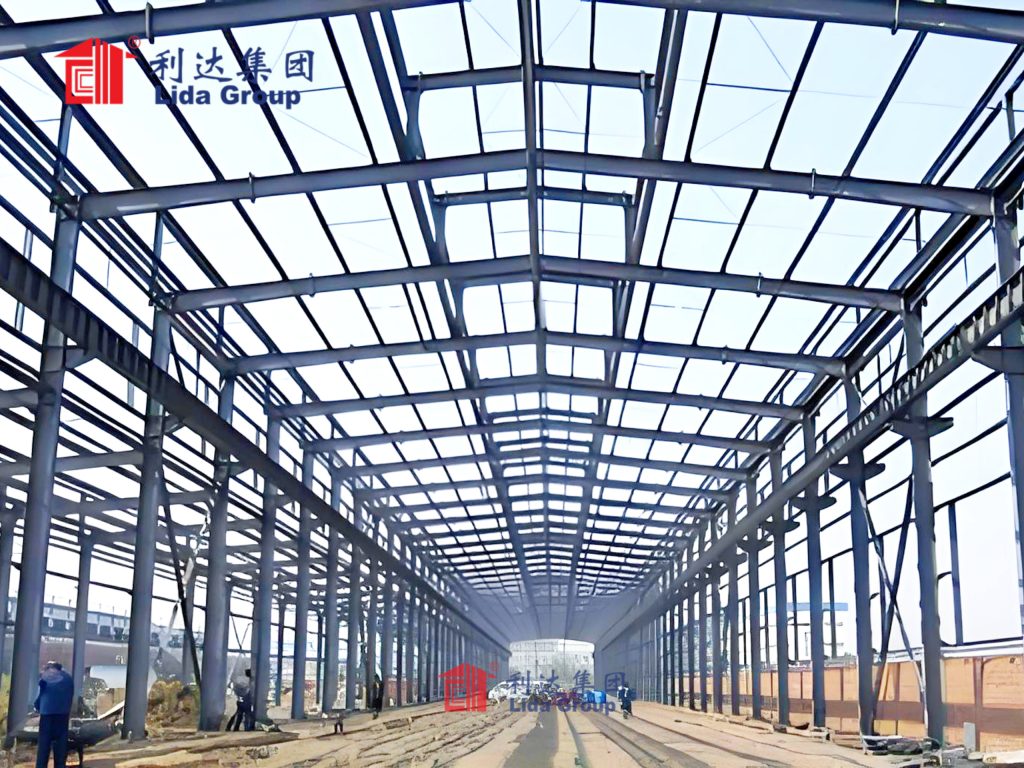
Real-World Case Studies: Global Suppliers Choose Lida
The preference for Lida’s steel structure warehouses among global agricultural suppliers is validated by successful implementations across diverse regions and product lines.
Case Study 1: Bulk Grain Supplier in the U.S. Midwest
A leading U.S. grain supplier needed a 5,000m² warehouse to store corn and soybeans, with capacity to expand as its export business grew. The supplier required a structure that could withstand Midwest tornadoes, support heavy grain silos, and integrate with its automated inventory system.
Lida delivered a clear-span steel warehouse with Galvalume-coated steel, tornado-resistant framing, and reinforced flooring for 10 bulk grain silos. The warehouse included a temperature-controlled zone for seed storage, a dust collection system, and pre-wired IoT sensors for inventory tracking. Two years later, the supplier expanded the warehouse by 2,000m² using Lida’s modular design.
Outcomes:
- Durability: The warehouse survived a Category 2 tornado with no structural damage, while a nearby wooden barn was destroyed.
- Efficiency: Automated inventory integration reduced stocktaking time by 60%, and clear-span design improved forklift movement efficiency by 30%.
- Cost Savings: Maintenance costs were 75% lower than the supplier’s previous concrete silo, and modular expansion saved $100,000 compared to building a new facility.
Case Study 2: Perishable Produce Supplier in Kenya
A Kenyan fresh produce supplier needed a 1,500m² warehouse to store fruits and vegetables destined for European markets. The supplier required temperature-controlled zones, insect-proofing, and compliance with EU food safety standards.
Lida designed a steel warehouse with two temperature-controlled zones (5°C for leafy greens, 12°C for fruits), insect screens, elevated foundations, and easy-to-clean epoxy floors. The warehouse integrated with the supplier’s cold chain logistics, with loading docks connected to refrigerated trucks.
Outcomes:
- Compliance: The warehouse met EU food safety standards, enabling the supplier to expand exports to Europe by 40%.
- Preservation: Temperature control reduced produce spoilage from 25% to 5%, increasing revenue by $200,000 annually.
- Weather Resistance: The warehouse withstood heavy monsoon rains with no water infiltration, protecting inventory during peak harvest season.
Case Study 3: Agricultural Machinery Supplier in Australia
An Australian machinery supplier needed a 3,000m² warehouse to store tractors and harvesters, with high-clearance bays and resistance to cyclones. The supplier also required a workshop area for equipment maintenance.
Lida delivered a steel warehouse with 10m-high clear-span bays, cyclone-resistant framing (capable of 200 km/h winds), and a dedicated workshop with reinforced flooring and tool storage. The warehouse included large overhead doors and a loading dock for truck access.
Outcomes:
- Durability: The warehouse survived Cyclone Seroja (2021) with no damage, protecting $2 million worth of machinery.
- Functionality: The workshop integration reduced maintenance turnaround time by 25%, improving customer satisfaction.
- Scalability: The supplier added two more bays three years later, accommodating its growing product line without disrupting operations.
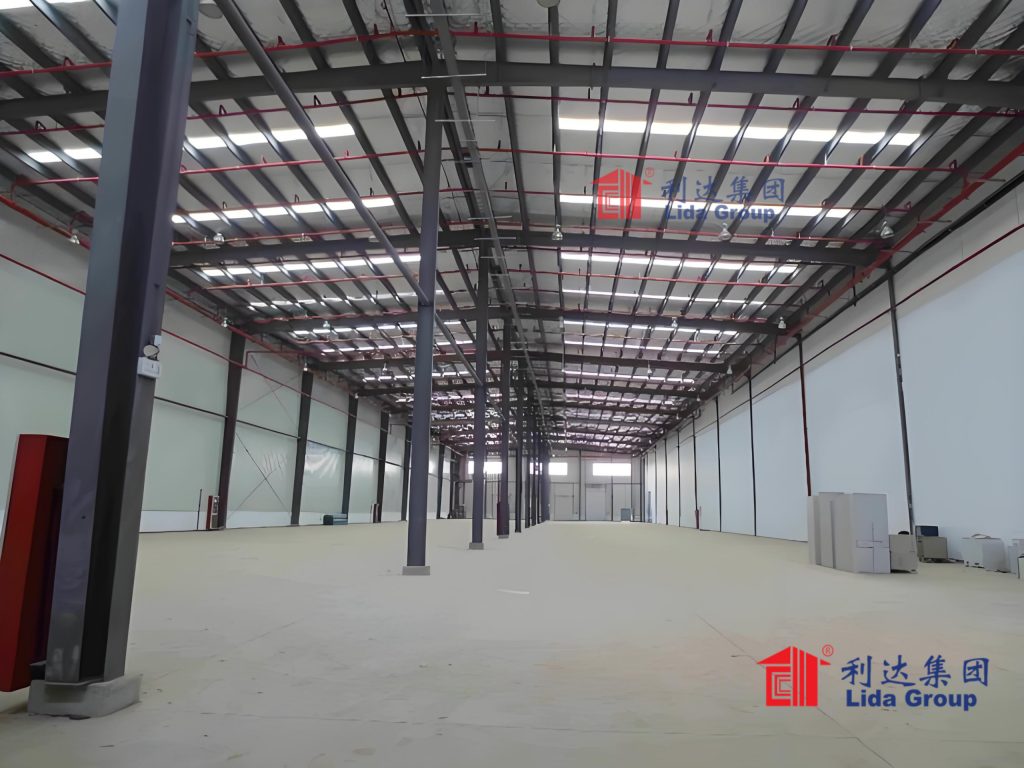
Competitive Advantage: Why Lida Outperforms Alternatives
In a crowded market for agricultural storage, Lida Group’s steel structure warehouses stand out due to their unique combination of durability, customization, and customer-centric support. Competitors—generic steel builders, concrete contractors, and budget prefab suppliers—cannot match Lida’s ability to meet the specific needs of global agricultural suppliers.
1. Agricultural-Specific Expertise vs. Generic Solutions
Many steel warehouse suppliers offer one-size-fits-all buildings designed for general industrial use, requiring suppliers to modify them for agricultural needs. Lida’s team includes agricultural engineers with decades of experience, ensuring every warehouse is designed with crop preservation, machinery storage, and regulatory compliance in mind. This expertise eliminates the need for costly retrofits and ensures the warehouse delivers maximum value from day one.
For example, Lida’s engineers understand that grain storage requires specific ventilation to prevent mold, while perishable produce needs segregated temperature zones—knowledge generic suppliers often lack.
2. Total Cost of Ownership (TCO) Advantage
While Lida
’s steel warehouses may have a higher upfront cost than budget prefab or wooden structures, their long lifespan, low maintenance, and operational efficiency result in a significantly lower TCO over 10–20 years. A 2024 analysis by an independent agricultural consulting firm compared the TCO of Lida’s steel warehouses to traditional alternatives for a 3,000m² grain storage facility:
- Lida Steel Warehouse: Upfront cost of \(500,000 + 10-year maintenance costs of \)50,000 + inventory loss of \(25,000 = Total \)575,000.
- Wooden Barn: Upfront cost of \(300,000 + 10-year maintenance costs of \)300,000 + inventory loss of \(150,000 = Total \)750,000.
- Concrete Silo: Upfront cost of \(600,000 + 10-year maintenance costs of \)200,000 + inventory loss of \(100,000 = Total \)900,000.
This analysis confirms that Lida’s solutions save suppliers 23–36% in TCO, a critical advantage for businesses operating on tight margins.
3. Global Logistics and Local Support
Global agricultural suppliers operate across borders, and Lida’s ability to deliver and support warehouses worldwide sets it apart from regional competitors. The company maintains a network of manufacturing hubs in China, the U.S., Germany, Brazil, and Australia, enabling local production and reducing transportation costs and delivery times.
Lida also provides end-to-end support tailored to global operations:
- Multilingual Engineering Teams: Teams fluent in English, Spanish, Portuguese, German, and Mandarin collaborate with suppliers to design warehouses that meet regional needs.
- Local Regulatory Expertise: In-house specialists ensure warehouses comply with local building codes, food safety regulations, and import/export requirements.
- After-Sales Support: Global service teams provide maintenance, repairs, and expansion support, even for warehouses in remote regions.
This global-local approach eliminates the logistical and regulatory headaches that often plague international suppliers using regional storage providers.
4. Innovation-Driven Design
Lida invests 8–10% of its annual revenue in research and development, ensuring its steel warehouses evolve with the changing needs of agricultural supply chains. Unlike competitors who rely on outdated designs, Lida continuously integrates new technologies and materials to enhance durability, efficiency, and customization.
For example, Lida was among the first to integrate IoT inventory tracking into agricultural warehouses and develop cyclone-resistant frames for tropical regions—innovations that address emerging challenges faced by global suppliers.
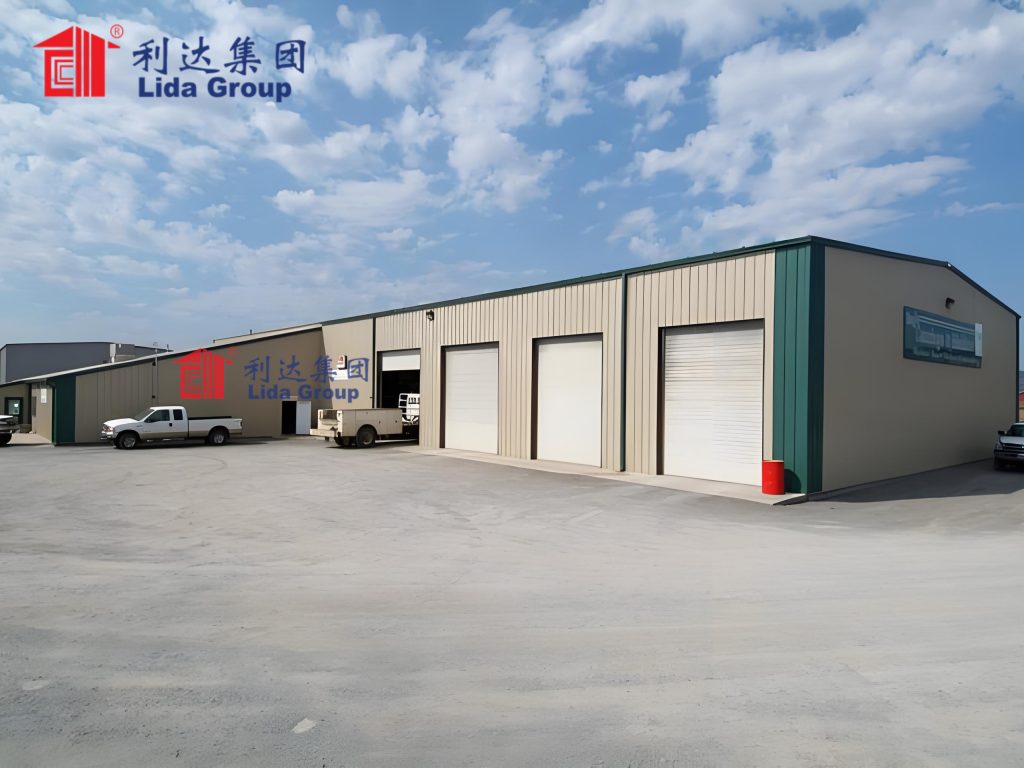
Future Innovations: Evolving with Agricultural Supply Chains
As agricultural supply chains become more digitized, sustainable, and resilient, Lida Group is investing in innovations to keep its steel structure warehouses at the forefront of the industry.
1. Smart Warehouse Integration
Lida is expanding its IoT capabilities to create “smart agricultural warehouses” that optimize storage and inventory management:
- Real-Time Condition Monitoring: Sensors for temperature, humidity, and grain moisture levels transmit data to a cloud platform, allowing suppliers to monitor inventory health remotely and receive alerts for issues like mold growth or pest infestations.
- Automated Inventory Management: AI-powered systems analyze sensor data and sales forecasts to predict stock levels, automatically triggering reorder alerts or adjusting storage conditions (e.g., lowering temperature for ripening produce).
- Robotic Integration: Warehouses are being designed to accommodate automated guided vehicles (AGVs) and robotic palletizers, reducing labor costs and improving efficiency for high-volume suppliers.
Pilot smart warehouses in the U.S. and Brazil have shown a 25% reduction in labor costs and 15% lower inventory loss compared to non-smart facilities.
2. Sustainable Materials and Energy Solutions
To align with global sustainability goals and the growing demand for eco-friendly agricultural practices, Lida is developing:
- Recycled Steel Frames: Frames made from 100% recycled steel, reducing carbon emissions by 30% compared to virgin steel.
- Solar-Powered Warehouses: Roofs integrated with solar panels and battery storage systems, enabling warehouses to operate off-grid and reduce reliance on fossil fuels.
- Carbon-Neutral Construction: Using low-emission manufacturing processes and carbon offset programs to make warehouse construction carbon-neutral by 2030.
These innovations not only reduce environmental impact but also help suppliers qualify for green certifications and incentives (e.g., EU Green Deal grants, U.S. USDA sustainable agriculture programs).
3. Climate-Resilient Upgrades
As extreme weather events become more frequent, Lida is enhancing its warehouses’ resilience:
- Flood-Resistant Foundations: Elevated steel foundations with waterproof barriers and sump pumps for regions prone to rising sea levels or flash floods.
- Heat-Resistant Insulation: New sandwich panel cores made from aerogel, which provides superior thermal insulation in high-temperature regions, reducing cooling costs by 40%.
- Tornado-Resistant Doors and Windows: Reinforced steel doors and impact-resistant glass that withstand debris impacts during tornadoes or cyclones.
4. Modular, Rapid-Deployment Warehouses
For suppliers responding to emergencies (e.g., crop shortages, natural disasters) or seasonal demand spikes, Lida is developing modular “rapid-deployment” warehouses that can be assembled in 3–5 days. These lightweight yet durable structures are transported in shipping containers and require minimal on-site preparation, providing flexible storage when and where it is needed most.
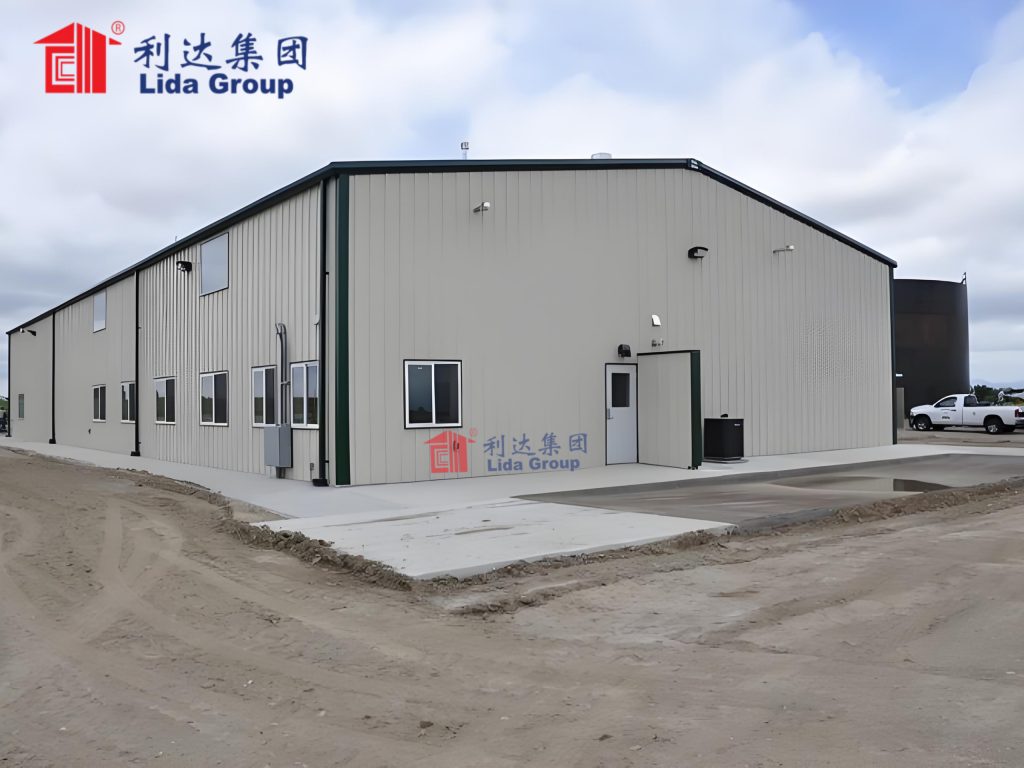
Conclusion
Global agricultural suppliers prefer Lida Group’s steel structure warehouse solutions because they solve the industry’s most pressing storage challenges—combining uncompromising durability with tailored customization that adapts to diverse regional, operational, and regulatory needs. Unlike traditional storage options that degrade quickly, limit growth, and incur high long-term costs, Lida’s warehouses are engineered to protect inventory, support expansion, and reduce expenses over decades.
The company’s success stems from its deep understanding of agricultural supply chains: high-grade steel materials and weather-resistant designs ensure durability in harsh environments; flexible sizing and specialized zones accommodate everything from bulk grain to perishable produce; and global-local support simplifies international operations. Real-world case studies from the U.S., Kenya, and Australia demonstrate that Lida’s warehouses deliver tangible results—reduced inventory loss, lower maintenance costs, and compliance with global standards.
Lida’s competitive edge lies in its refusal to offer generic solutions; instead, it combines agricultural expertise, TCO efficiency, and innovation to create warehouses that grow with suppliers’ businesses. As the industry evolves, Lida’s focus on smart technology, sustainability, and climate resilience ensures its solutions will remain the preferred choice for global agricultural suppliers.
In a world where food security and supply chain resilience are increasingly critical, Lida Group’s steel structure warehouses are more than just storage facilities—they are strategic assets that enable agricultural suppliers to thrive in a complex, fast-changing global market. By prioritizing durability and customization, Lida has set a new standard for agricultural storage, proving that effective storage is not just about preserving goods, but about powering the entire agricultural supply chain.

Related news
-
Lida Group Revolutionizes Agricultural Storage with High-Quality Steel Farm Houses Using Advanced Steel Frame Building Techniques
2025-09-10 10:36:37
-
The Future of On-Site Accommodation: Smart Technology in Lida Group's Prefab Worker's Dormitory and Mobile Units
2025-09-08 17:51:29
-
Lida Group Integrates Modern Amenities into Its High-Quality Mobile Building Designs for Superior Worker Comfort
2025-09-08 16:20:25
contact us
- Tel: +86-532-88966982
- Whatsapp: +86-13793209022
- E-mail: sales@lidajituan.com


